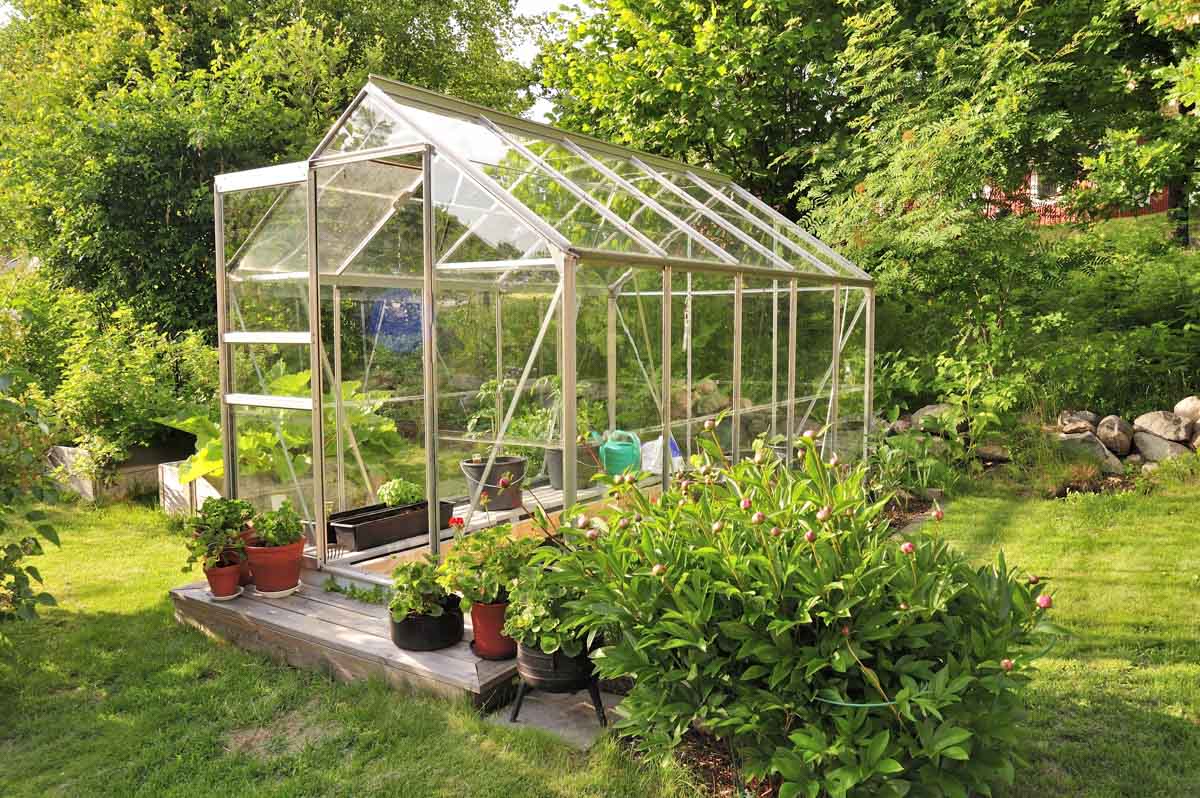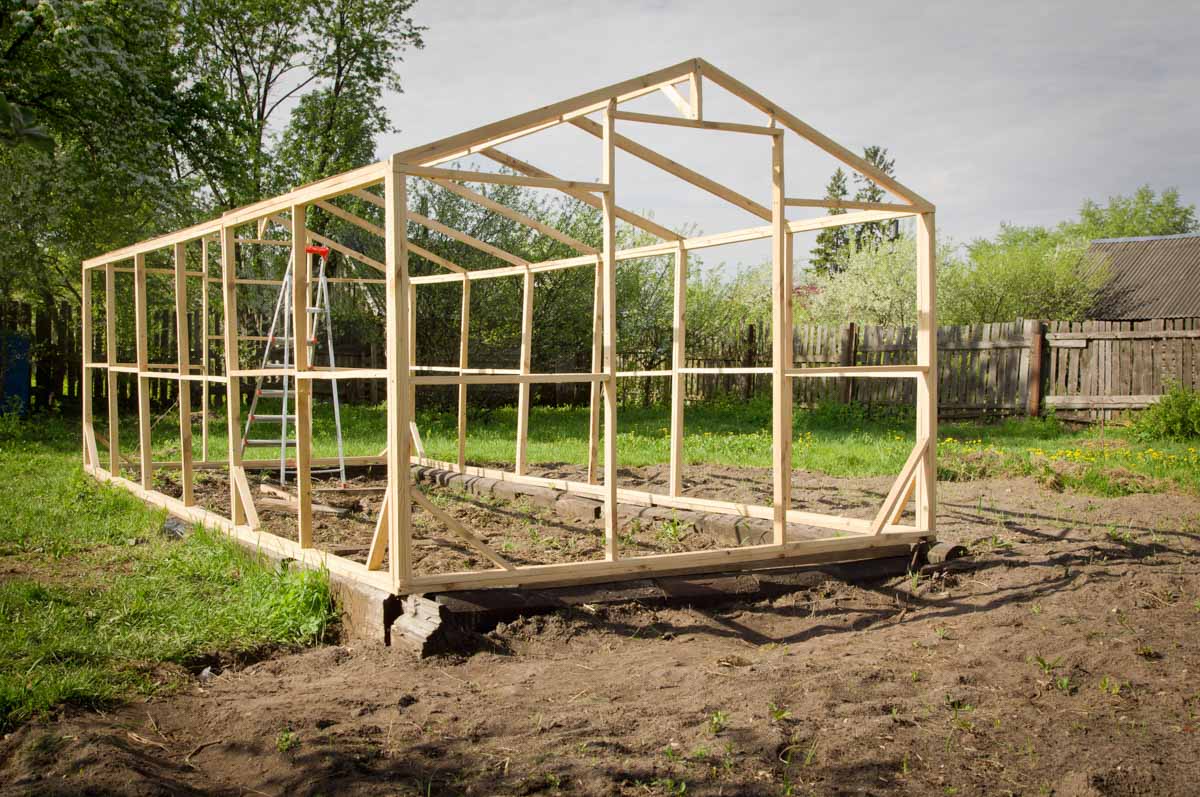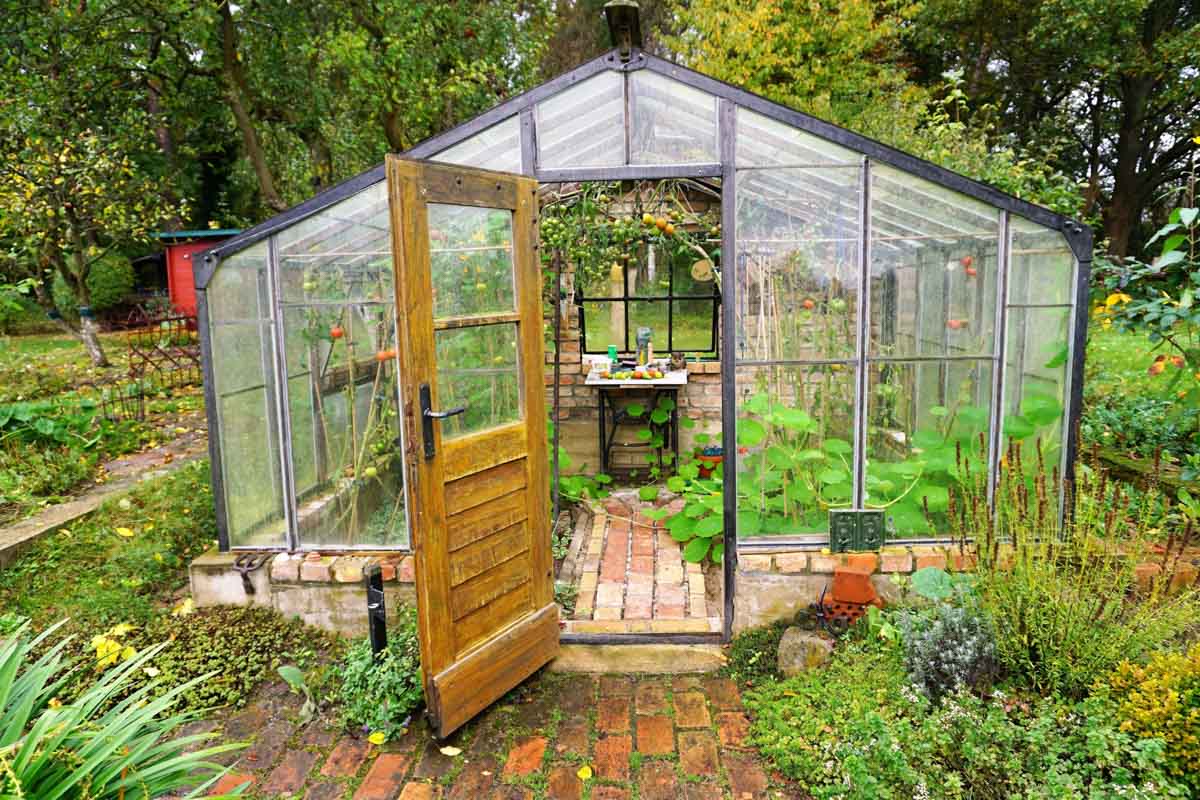Wondering what the best position for a greenhouse is? Read this practical guide.
A greenhouse is an ideal addition to any garden. If you are considering getting a greenhouse for your home, there are some best practices to follow when trying to decide where best to put it that will help it thrive in the long run.
While there are many things you can change about your greenhouse once it’s installed – whether you grow in pots or in raised beds, or whether you have ventilation installed, changing the location of a greenhouse is very time-consuming and expensive.
As such, it’s worth spending time planning this step in your greenhouse journey carefully.
This guide will walk you through all the things you need to consider when you are deciding the best position for a greenhouse in your garden.
The Best Position for a Greenhouse
Position Your Greenhouse for Plenty of Sunlight
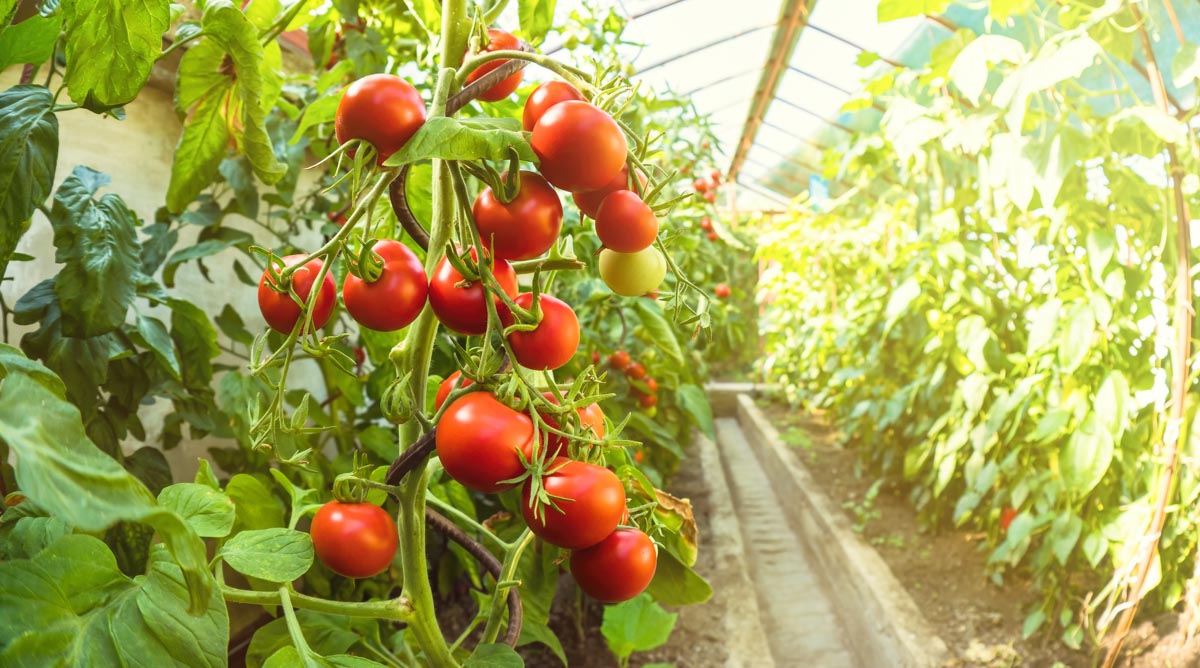
When it comes to best positioning a greenhouse, one of the most important factors to consider is how much sunlight the structure will get.
Most greenhouses need at least six hours of direct sunlight per day, so take into account what areas of your property get the most sun.
South-facing locations are ideal, but East- and West-facing spots can work as well—just be sure to account for the angle of the sun at different times of day.
In short, pick a spot that will get as much sunlight as possible.
Position the Greenhouse on Level Ground
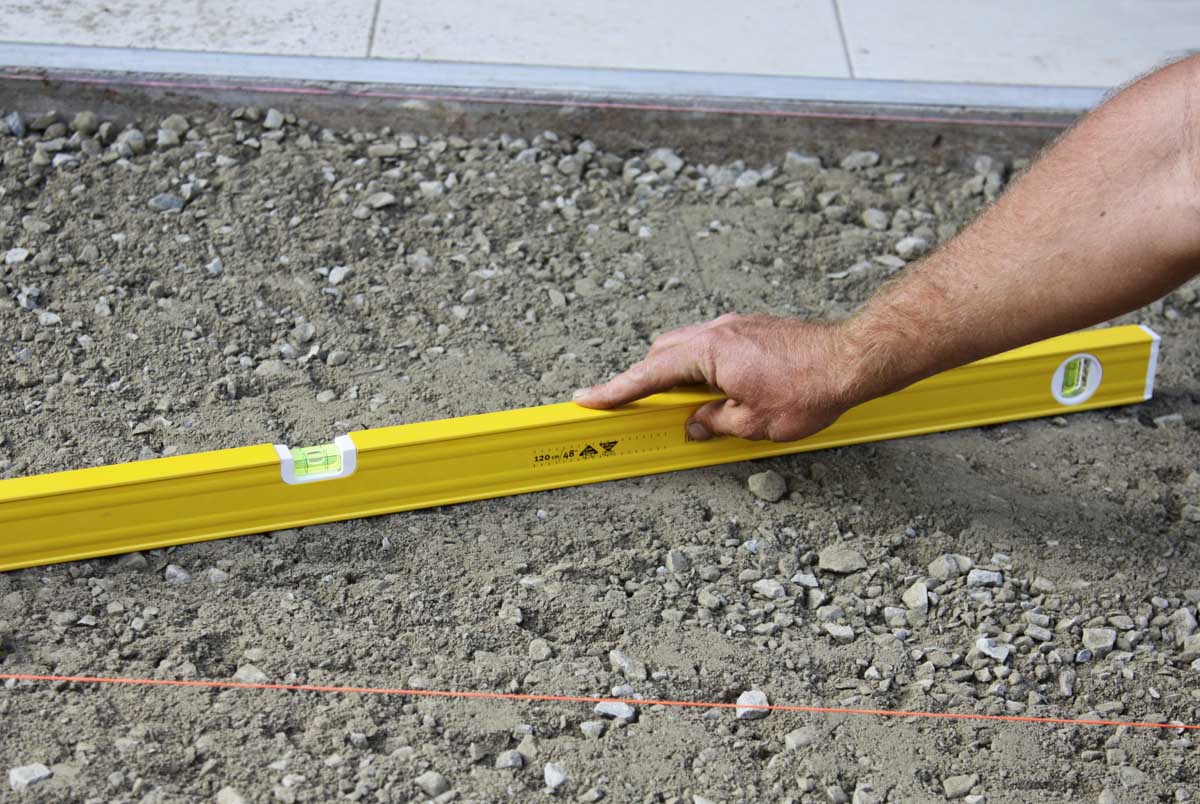
Your greenhouse needs to be located on level ground to avoid any potential structural damage. If your plot is not perfectly flat, try to find a spot that is as close to level as possible and then build a solid and level foundation.
At worst, excessive movement in your greenhouse can cause panes to shatter. Even on the more benign end of the scale, it can cause problems with doors and windows not opening or closing properly.
Uneven surfaces can also cause drainage problems, which can lead to water accumulation and mold growth inside the greenhouse.
Situate the Greenhouse Away From Trees
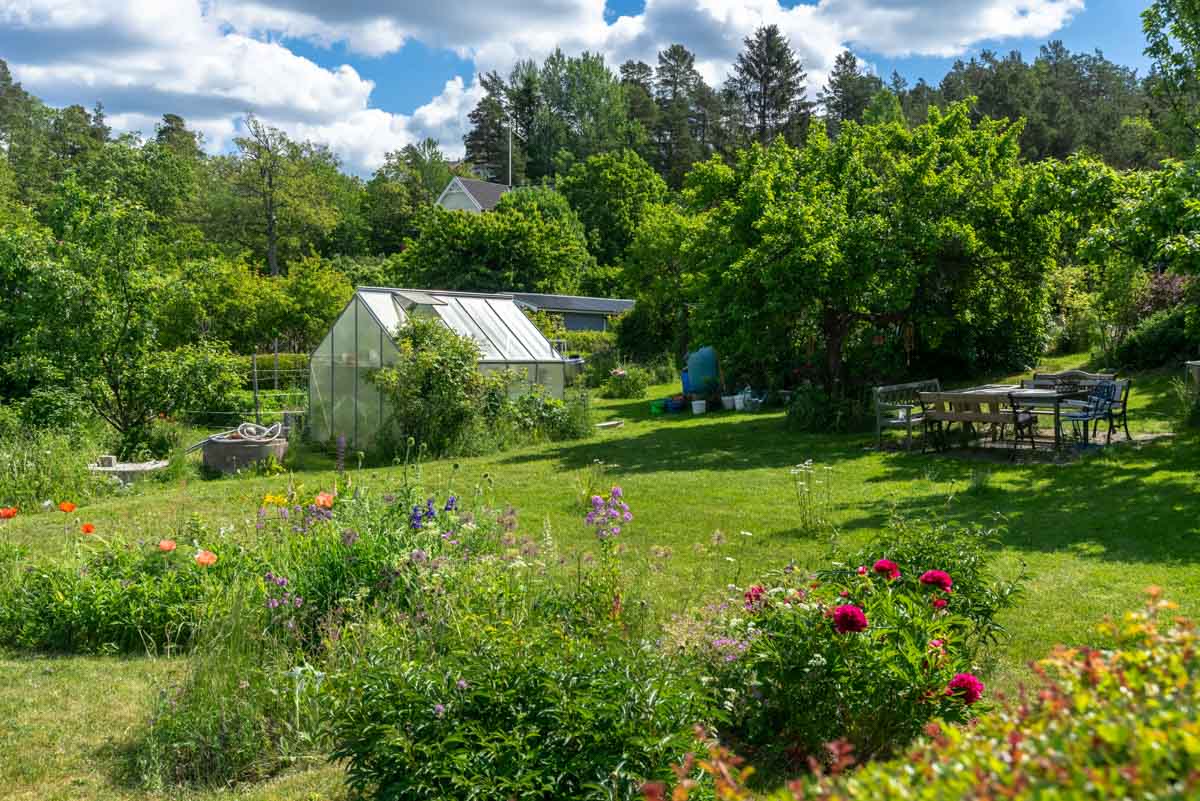
Greenhouses should also be positioned away from trees to avoid any potential damage due to falling branches and also to avoid sitting in the tree’s shade spot.
When growing fruits or vegetables in a greenhouse, keeping a clear space around the structure will help to keep you and your plants safe.
If a large tree is in an optimal location for your greenhouse but still close enough to be a potential falling hazard, use cables or ropes to secure it against strong winds—this will prevent most common accidents related to falling trees, but won’t resolve issues with shade.
Locate the Greenhouse in Plenty of Space
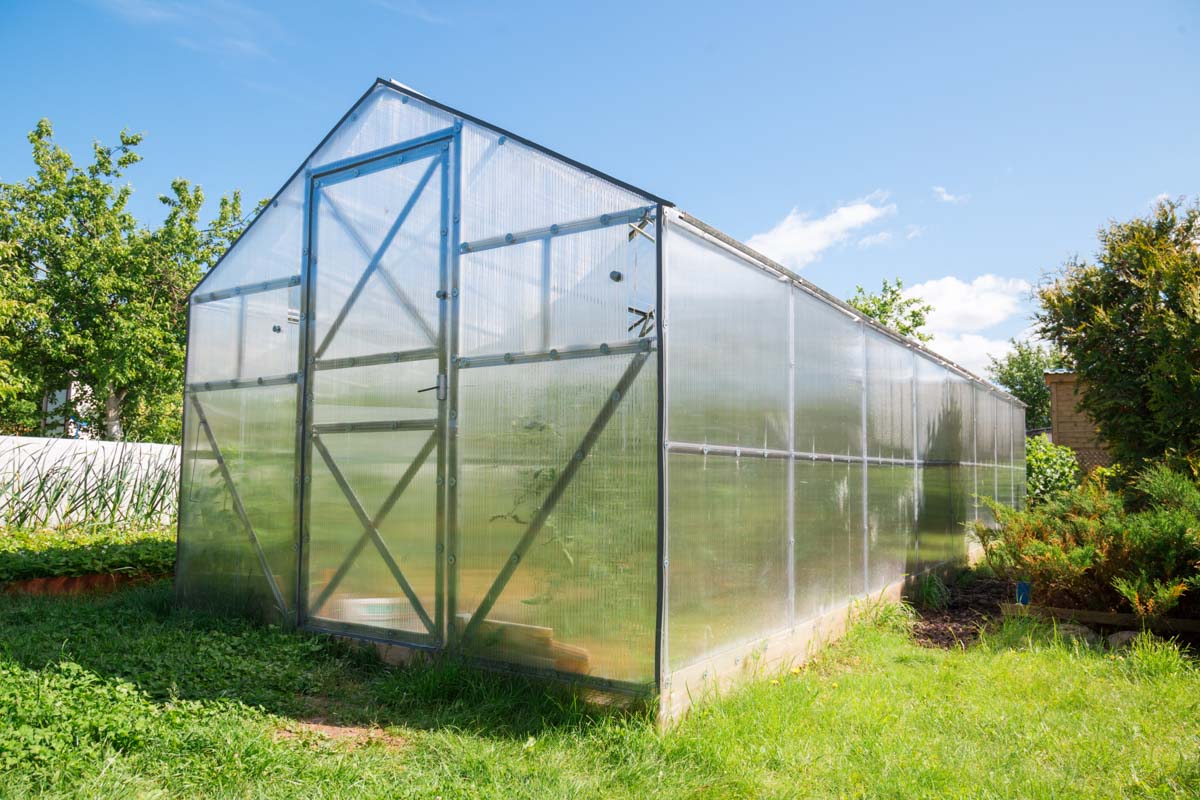
Ideally, the best place for a greenhouse is in a position with plenty of space around it.
This means leaving enough room for people to walk around the structure, as well as avoiding any areas with trees (which we already covered above) or other potential hazards.
If you have the option, try to choose a spot that is away from any high traffic areas or where people might congregate.
Put Your Greenhouse Somewhere You Can Access it Easily

If you have a choice of location, try to position your greenhouse in an area where you can access it easily.
If you have the option, try to choose a spot that is close to your home or at least next to a pathway. This will make it easier to get in and out of the greenhouse, and also reduce the amount of time it takes to move tools, plants and materials in and out.
Avoid Frost Pockets
One important consideration when positioning your greenhouse is to avoid any areas that tend to be colder than the surrounding area.
This is known as a frost pocket, and it can cause problems for your plants by damaging or killing them.
Position it on Well-Draining Soil
When positioning your greenhouse, try to find a spot that has well-draining soil. If the area around your greenhouse tends to be swampy or soggy after even slight precipitation, this can cause structural damage and lead to problems such as mold development and pests.
If you already know that your property contains well-draining soil you can skip this part.
To best determine if an area will drain properly, dig a hole where you intend to put the greenhouse and fill it with water. Check the hole after an hour or two, then at least once a day for several days in a row. If water levels remain the same or drops very slowly, this area won’t drain well.
Think About if You Will Need Access to Services Like Water or Electricity
If you will need access to services like running water or electricity, it is best to choose a greenhouse site in an area where these are easily accessible.
This might mean having a spot near a door or pathway, or close to a power outlet or water spigot. If you are not sure where these are on your property, take a walk around before deciding on a final location for your greenhouse.
Best Greenhouse Position: Conclusion
As you can see, the best position for a greenhouse depends on several factors. By considering these factors when positioning your greenhouse, you can maximize the efficiency of your greenhouse and ensure that everything runs smoothly from start to finish during the growing process.

